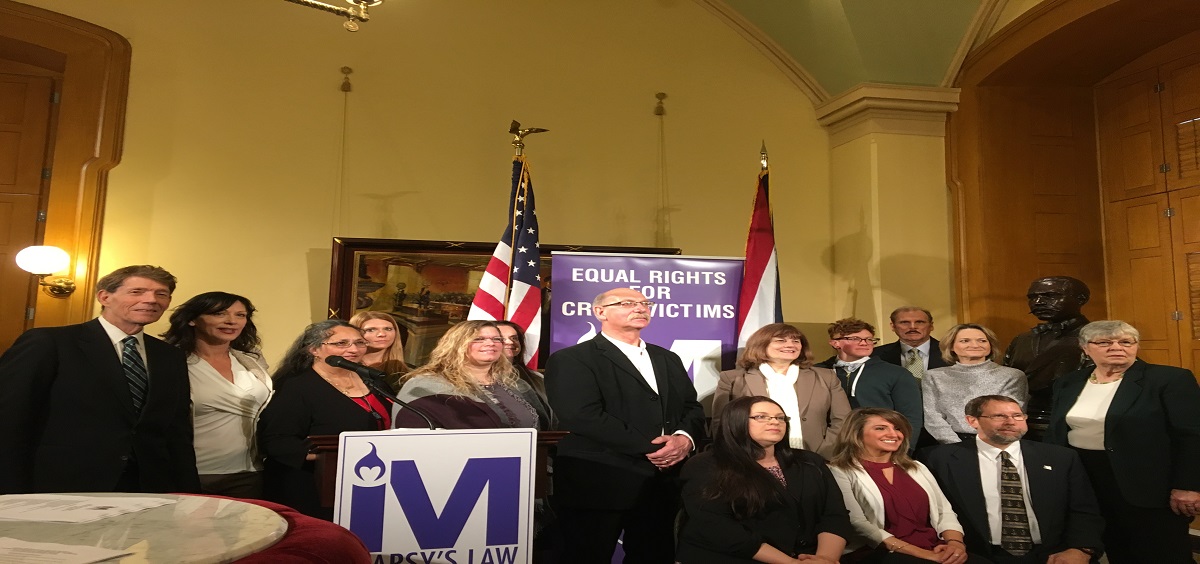Uncategorized

Advocates Push to Get “Marsy’s Law” for Crime Victims on Statewide Ballot
By: Jo Ingles | Statehouse News Bureau
Posted on:
COLUMBUS, Ohio — A group that wants to put a proposed constitutional amendment to help crime victims on the statewide ballot this fall is forging ahead with its effort.
Advocates for crime victims say Ohio’s constitution needs to be changed. They want Ohio voters to pass what’s known as “Marsy’s Law”, similar to legislation that has been passed in several other states. Ohio Crime Victim Justice Center Executive Director Cathy Harper Lee said it would guarantee several rights for victims.
“Marsy’s law will bring unprecedented protections to crime victims in Ohio by not only ensuring they’ll have the right to notification of all proceedings, the right to be present at proceedings, the right to be heard at proceedings, the right to restitution and a clearly articulated right to enforce their rights when they are ignored.”
Marsy’s Law is named for Marsy Nichols, who was a college student in California in 1983 when she was shot and killed by her ex-boyfriend. A week after her murder, her parents ran into her alleged killer in a store, having no idea he’d been released on bail. That started their crusade for more rights for victims and survivors of crimes and their families.
Franklin County Prosecutor Ron O’Brien said it would make sure counties enforce protections for victims if voters approve Marsy’s law.
“They sometimes have difficulty in enforcing the rights that currently exist. This provides an additional protection of enforcement and I think largely that is one of the additional provisions and benefits that both I support and I think those who have questions of when we already protections, why do we need more, I think that’s the primary reason, at least in my mind.”
Crime victim advocate Cathy Harper Lee gave this example: an Ohio woman whose now ex-husband continued to abuse her and her children through divorce proceedings, largely because of the way a local judge handled the case.
“The judge in the criminal court had a policy to not hear domestic violence cases when a divorce was pending. The divorce went on for two and a half years. For two and a half years, her husband threatened her, sent her voicemails to threaten her life, and ran her and her children off the road on three separate occasions. She and her children lived in constant fear. She begged the prosecutor for protection. She begged the court to not allow these continuances to happen. Finally, the divorce concluded and the criminal prosecution began. You won’t believe what happened next. The case was dismissed because the judge had determined that the defendant’s right to a speedy trial had been violated.”
Crime victim Danielle Morlan felt the way the criminal charges were handled emboldened her attacker.
“This was someone who felt like, ‘ok, if the court says it’s ok and they are not going to do anything then I’m going to do more. So I think that might have felt like an advantage to him.”
Critics say the law creates a complicated process that has caused problems for prosecutors, defense attorneys and law enforcement in the five states where it’s passed. But in Ohio, the proposed constitutional amendment has support from a long list of groups including MADD – Ohio, the Ohio Domestic Violence Network, Parents of Murdered Children of Ohio, the Buckeye Regional Anti-Violence Organization, the Ohio Alliance to End Sexual Violence and the Ohio Victim Witness Association.
The plan is also supported by groups that represent minority populations such as the Ohio Hispanic Coalition, Somali Community Association of Ohio, Asian American Community Services and the Columbus Urban League. Backers of Marcy’s law have cleared the initial petition hurdles and are now collecting petition signatures.
They will need nearly 306,000 valid petition signatures needed to put the issue on this fall’s ballot.

